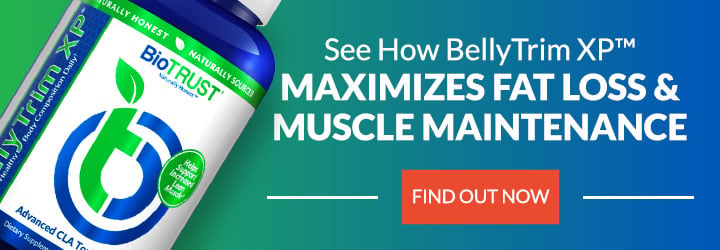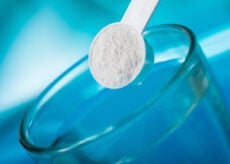5 Healthy Cocktails for Your New Year’s Eve Celebrations

Between holiday parties, family gatherings, and New Year’s Eve celebrations, the holidays are virtually synonymous with booze. (And, depending on your family and co-workers, some may be more likely to imbibe than others.) Of course, excessive alcohol consumption is bad news for your health and your waistline; it affects your thought processes and leads to poor food choices, overeating, and poor sleep quality, and there are obvious long-term repercussions—like premature death, brain atrophy, and aging.1
On the other hand, light-to-moderate alcohol intake, especially when enjoyed as part of an overall healthy lifestyle, may be more likely to protect against weight gain. Even more, research shows that moderate alcohol consumption may be related to improvements in various biomarkers (e.g., markers of inflammation) and aspects of health (e.g., cardiovascular health, cognitive function, gut microbiota).
Having said that, you don’t have to pass on the booze this New Year’s Eve, and you certainly don’t have to be a hermit; you just have to make better choices and exercise moderation (e.g., 1 – 2 drinks). Below you’ll find five of our favorite New Year’s Eve cocktails. Cheers!
5 Healthy New Year’s Eve Cocktails
Red Wine
Red wine is arguably the most notable “healthy” vehicle for alcohol and for good reason. Like many of other dark, rich-colored fruits, red wine grapes are a rich source of antioxidant polyphenols (e.g., anthocyanins), the most prominent being resveratrol. A number of studies have shown that resveratrol possesses powerful anti-inflammatory activity, and it may even have fat-fighting superpowers.1
For instance, research has shown that resveratrol reduces the body’s ability to store fat while subsequently enhancing its ability to burn fat.2 Not only that, resveratrol has been shown to activate a special type of fat-burning fat (i.e., “brown” fat), increasing metabolic rate and calorie burn.3 In addition, red wine appears to improve cholesterol levels, increase insulin sensitivity, and possess antioxidant and anti-inflammatory activity.4
It’s best to opt for dry red wines if you’re watching your waistline because they are lowest in sugar and the most calorie-conscious. Popular varieties of dry red wine include:
Cabernet Sauvignon
Merlot
Cabernet Franc
Malbec
Grenache
Syrah
Pinot Noir
Zinfandel
Sangiovese
Tempranillo
Liquor “Neat” or “On the Rocks”
Arguably the “healthiest” way to imbibe with liquor is to drink it “neat” (alone and meant to be sipped) or “on the rocks” (with a little ice). While most New Year’s Eve cocktails are made with mixers, sugar-sweetened beverages (e.g., soda, juice), and/or other liqueurs, drinking liquor neat or on the rocks is the most calorie-conscious.
For instance, a typical shot of vodka, whiskey, gin, or tequila contains about 100 calories. On the other hand, most drinks made with those liquors contain three or more times that many calories. Since drinks ordered neat or on the rocks are typically made with a “double” (i.e., two shots of liquor), you’re better off ordering a “single” to keep alcohol consumption moderate and calories to a minimum.
Margarita
Margarita…doesn’t that just make your mouth water? Unfortunately, margaritas are made with mixers and syrups that are very calorie- and sugar-dense. Our twist on this classic cocktail involves tequila and fresh-squeezed lime and orange along with a little soda water.
Here’s what you’ll need:
1 ½ ounces tequila
¾ ounces fresh-squeezed lime juice
¾ ounces fresh-squeezed orange juice
Soda water
In a shaker filled with ice, combine tequila, lime juice, and orange juice. [If you like it a little sweeter, you can add a ½ tbsp. of agave syrup.] Strain into a margarita or rocks glass (salted rim optional) filled with ice and add a splash of soda water.
Moscow Mule
When it comes to the Moscow Mule, there are many recipe variations, but there is one critical constant: The copper mug. Traditionally, the Moscow Mule is a combination of vodka, ginger beer, and lime juice. We suggest substituting a zero-calorie ginger ale for the high-calorie ginger beer, and we also like to add a little bit of fresh ginger and mint, which add flavor and myriad health benefits to boot!
Here’s what you’ll need:
1 ½ ounces vodka
4 ounces zero-calorie Stevia-sweetened ginger ale (e.g., Zevia™)
½ ounce fresh-squeezed lime juice
½ inch ginger, sliced
¼ cup fresh mint leaves
Add ginger and mint to a copper mug and muddle/crush them with a wooden spoon or pestle. Add ice, vodka, lime juice, and ginger ale and stir to combine.
Champagne
What’s a New Year’s toast without champagne? The great news is that champagne is one of the most weight-management friendly options, considering that a glass of champagne is lower in calories than red wine, white wine, or beer.
Here’s a fun fact that you can share with friends: Researchers from the University of Reading in England found that champagne may improve spatial memory, which refers to information about your environment.5 Just like choosing a red and white wine, it’s best to opt for dry champagne with low residual sugar, including Brut Natural, Extra Brut, and Brut.
Cheers!
Remember, alcohol is not only an addictive substance; it is a calorie-containing beverage that can interfere with your thought processes and your metabolism. Along those lines, excessive alcohol consumption—both acutely and long-term—has obvious, well-known detrimental effects on virtually every aspect of human health.
On the other hand, there is sound scientific evidence suggesting that moderate consumption of alcohol may improve cardiovascular health, cognitive function, insulin sensitivity, and gut health while reducing markers of inflammation. Of course, there’s additional benefits when you enjoy New Year’s Eve cocktails like those that we’ve shared above with friends. After all, positive social support is an important part of an overall healthy lifestyle, and it can also play a key role in weight management.6
With all that in mind, Happy New Year! All the best to you and your loved ones in the coming year!






